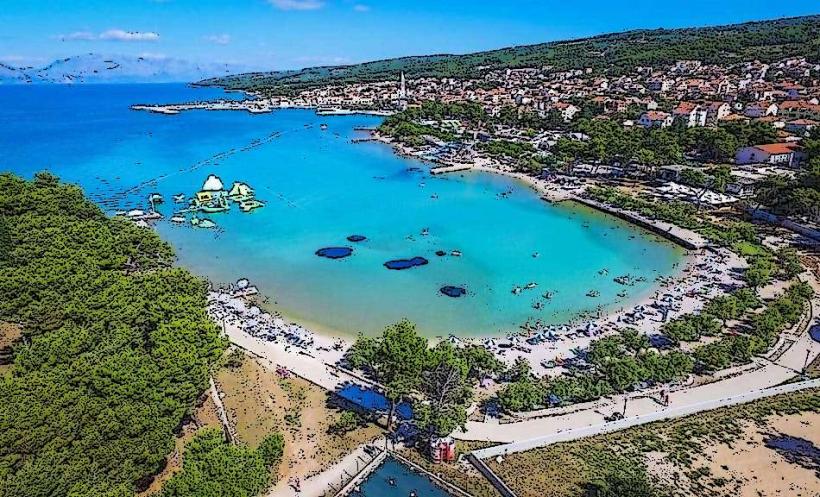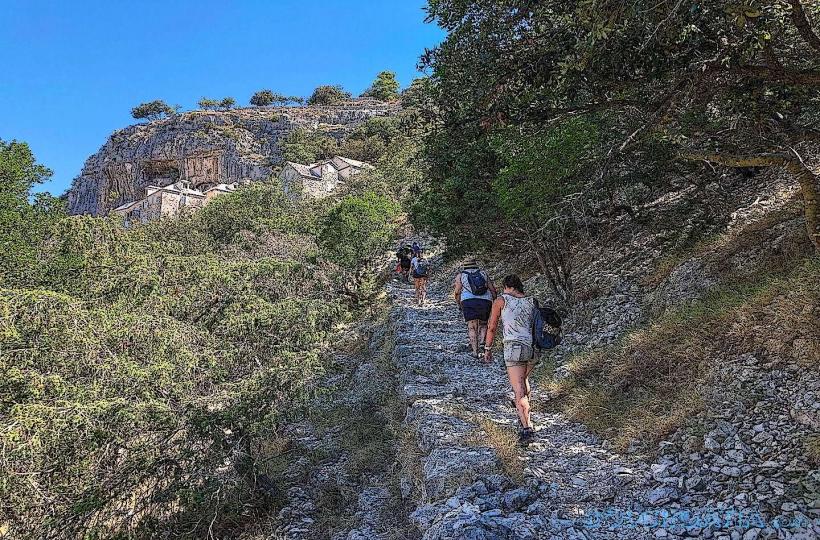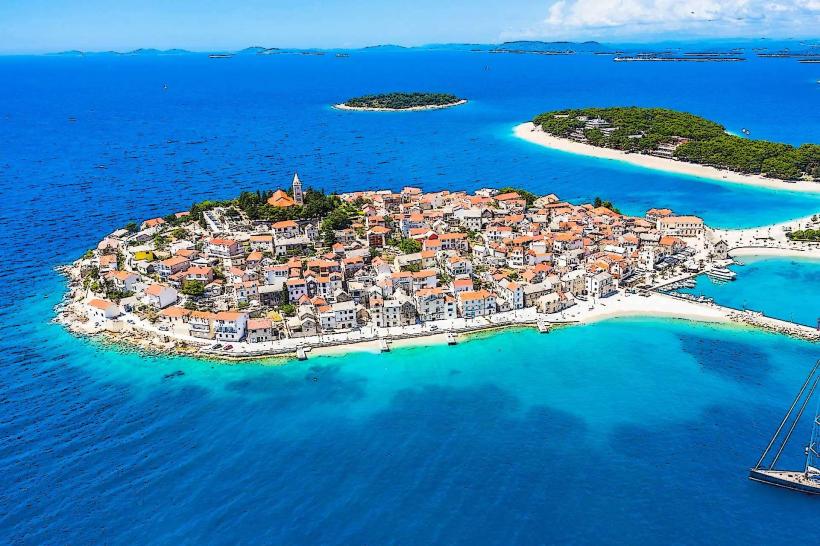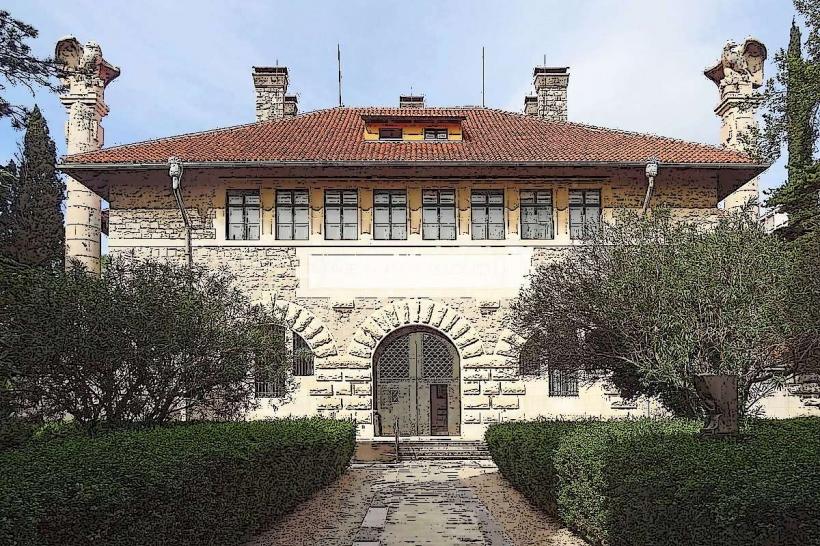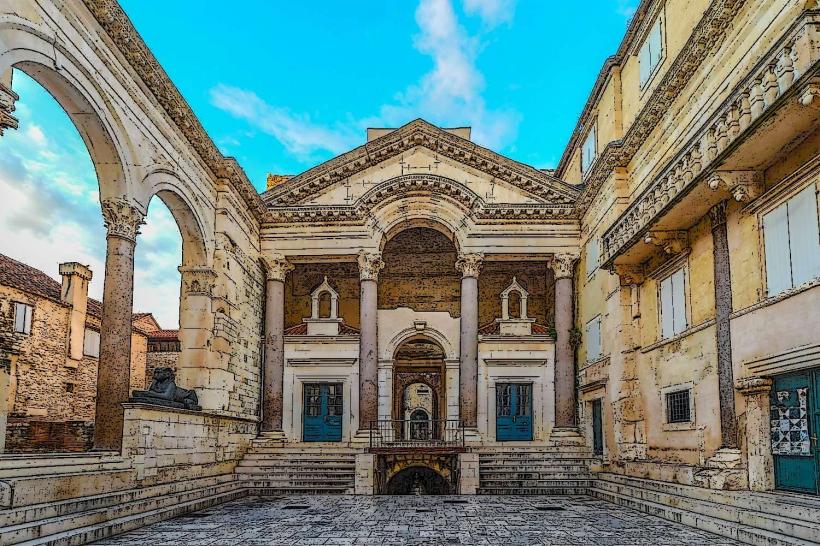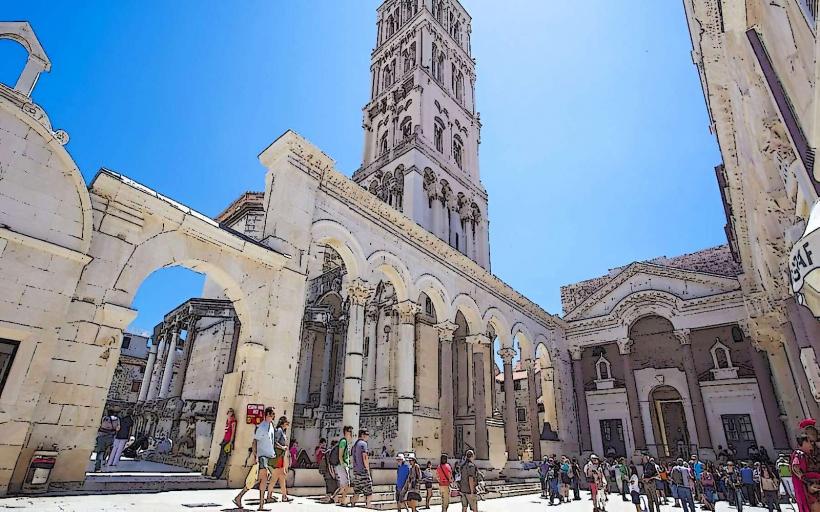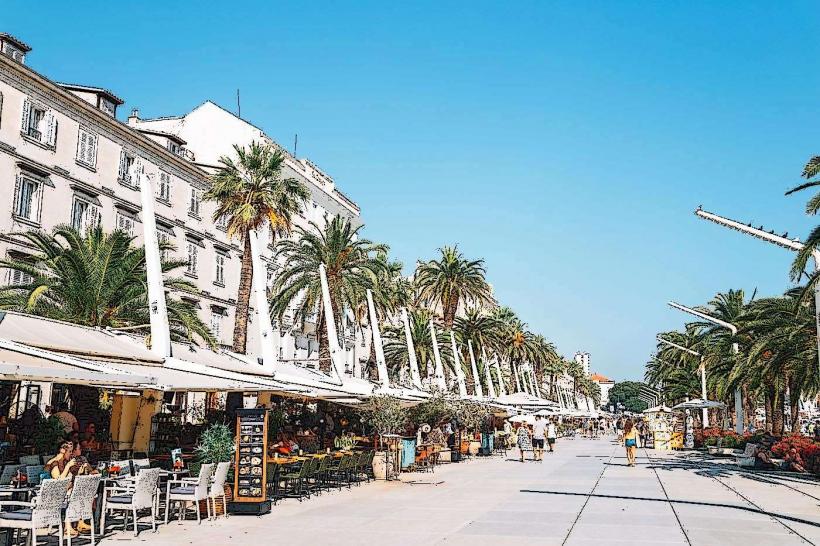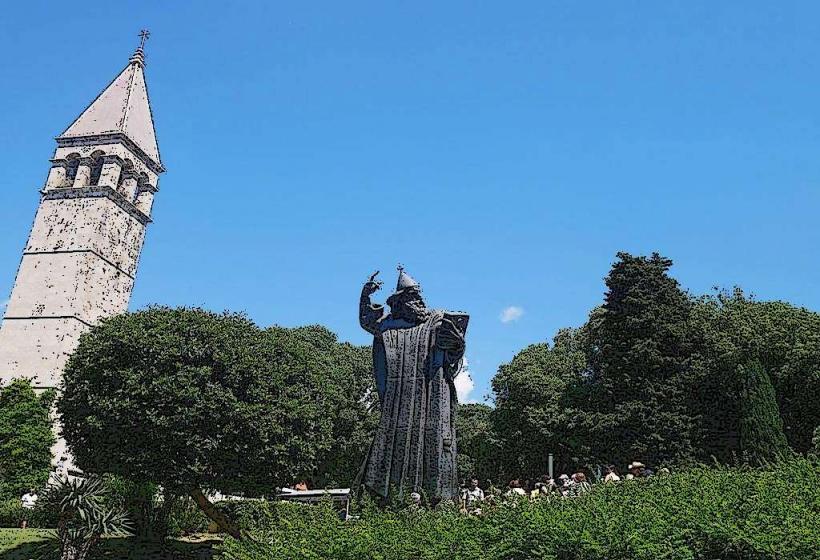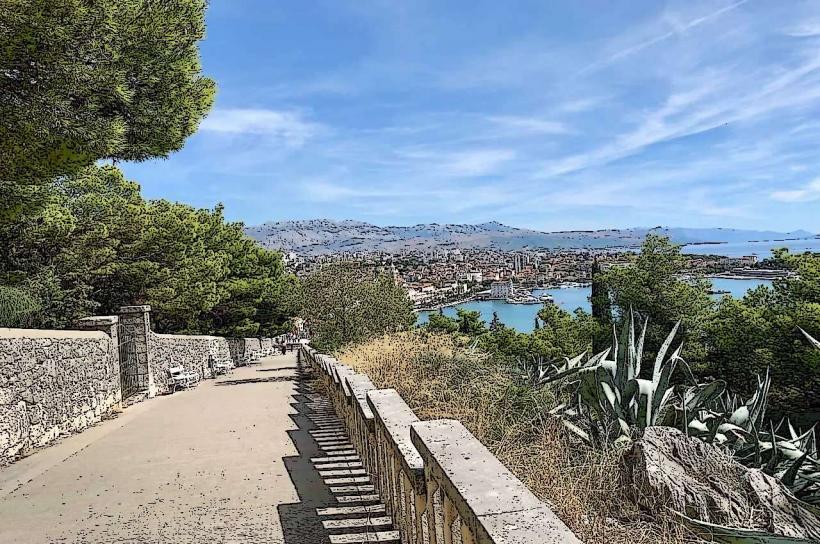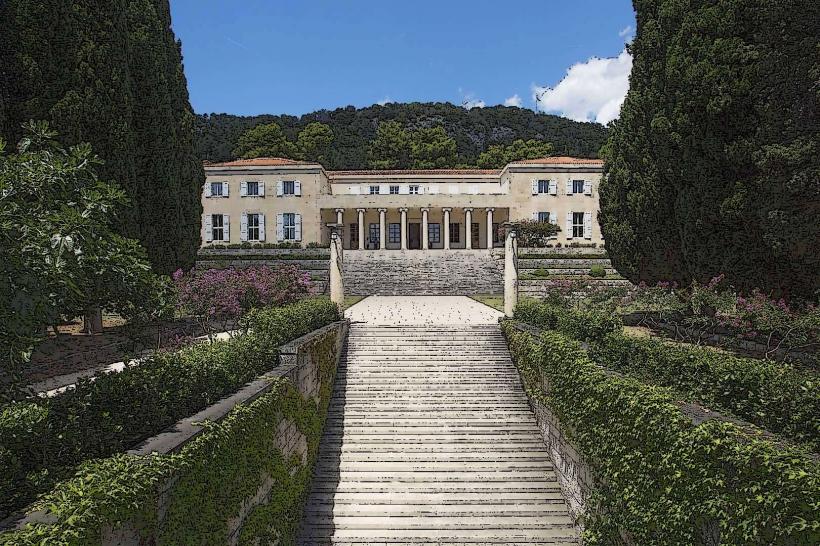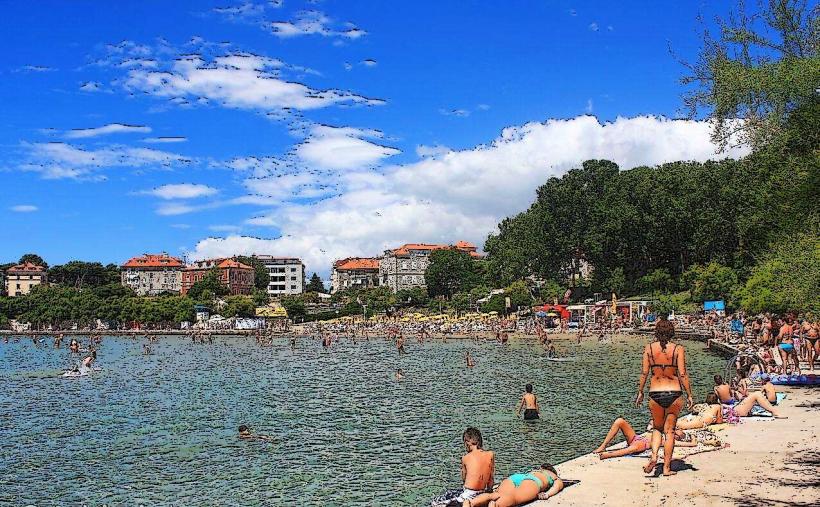Information
Landmark: Blue CaveCity: Split
Country: Croatia
Continent: Europe
The Blue Cave (also known as Modra Špilja) is one of the most famous natural attractions in Croatia and is located on Biševo Island, which lies just off the coast of Vis Island in the Adriatic Sea. This stunning sea cave is renowned for its unique phenomenon, where the sunlight, entering the cave through an underwater opening, creates an otherworldly blue glow that illuminates the entire interior, making it a must-see for visitors to the region.
Overview of the Blue Cave
1. Geographic Location
- Biševo Island: The Blue Cave is located on the eastern side of Biševo Island, which is part of the central Dalmatian archipelago. The island itself is small and sparsely inhabited, making it a peaceful destination that contrasts with the more tourist-heavy areas of Croatia.
- Access: The cave is accessible only by boat. Visitors typically take guided boat tours that depart from Komiza, a town on Vis Island, or from nearby ports on Biševo Island. The ride to the cave offers scenic views of the coastline and the surrounding islands.
2. The Blue Glow Phenomenon
- The primary feature that makes the Blue Cave so spectacular is the ethereal blue glow that fills the cave's interior. This phenomenon occurs when sunlight passes through an underwater entrance into the cave. The light is refracted and reflected off the white sandy bottom of the cave, creating a radiant blue illumination that bathes the walls and the water inside.
- The best time to experience this natural light show is around midday, usually between 11 AM and 1 PM, when the sun is at its peak and the effect is most vivid. During these hours, the cave is filled with a surreal, almost otherworldly blue color that attracts photographers and nature lovers from all over the world.
3. The Cave's Dimensions
- Entrance: The entrance to the Blue Cave is relatively small and can only be accessed by smaller boats or kayaks due to its narrow width. The cave itself is about 16 meters (52 feet) deep and 10 meters (33 feet) wide at its largest point, but the entrance is only about 1 meter (3 feet) high, which limits the size of the boats that can enter.
- Interior: Inside the cave, the water appears in varying shades of bright blue, ranging from light turquoise to deep cobalt, depending on the angle of the sunlight. The cave’s ceiling is high and domed, and the walls are lined with smooth limestone, adding to the cave’s beauty.
4. History and Discovery
- The Blue Cave was known by locals for centuries, but it became internationally famous after being rediscovered by Roman poet and philosopher, P. J. R. in the 19th century. The cave was later explored by tourists in the 20th century as part of the growing interest in the natural wonders of the Adriatic.
- During the Austro-Hungarian Empire, the cave was used by the military for hiding small boats and supplies, although its full potential as a tourist attraction wasn’t realized until the late 20th century.
5. Visiting the Blue Cave
- Boat Tours: Visitors to the Blue Cave can take guided boat tours from Vis or Biševo Island. The boats are usually small, often motorboats, and can carry a small group of passengers at a time. The boat ride to the cave is a scenic journey across the Adriatic, offering views of Biševo’s rugged coastline and nearby islands.
- Entrance Access: The boat enters the cave through a low, narrow passage, and visitors must duck down to avoid hitting their heads as they pass through. The boat rides slowly into the cave to give everyone enough time to take in the sight of the glowing blue water and the smooth rock formations inside.
- Peak Time: As the Blue Cave is one of Croatia’s most popular natural wonders, it can get crowded, especially in the summer months. It’s recommended to visit early in the day or later in the afternoon to avoid the busiest times.
6. Best Time to Visit
- Midday (11 AM – 1 PM): The best time to experience the Blue Cave's full glory is between 11 AM and 1 PM when the sunlight illuminates the cave’s interior in its brightest, most striking blue hues.
- Season: The peak season for visiting the Blue Cave is during the summer months (June to August), when the weather is warm and the sea is calm. However, it can be crowded during this time. Spring and early autumn are also great times to visit if you prefer fewer tourists and still favorable weather.
7. Nearby Attractions on Biševo Island
In addition to the Blue Cave, Biševo Island offers other interesting spots for visitors to explore:
- Monastery of St. Mary: Located on the island’s highest point, this 19th-century monastery provides panoramic views of the island and the sea.
- Other Caves: Biševo also has several other caves, including the Green Cave (Modra Špilja), which is another beautiful natural attraction, although not as famous as the Blue Cave.
- Beach and Nature: The island is sparsely populated and features a rugged coastline with beautiful beaches, clear waters, and a tranquil atmosphere. Exploring the natural landscape of Biševo is ideal for those looking for peace and solitude.
8. Environmental Protection
Due to the Blue Cave's popularity and the sensitivity of the natural phenomenon, there are regulations in place to protect both the cave and its visitors:
- Visitor Numbers: The number of visitors to the cave is controlled to avoid overcrowding and preserve the site. Only small boats are allowed to enter the cave, and the entrance is limited to a specific number of boats at any given time.
- Conservation Efforts: The local authorities on Biševo Island have implemented measures to ensure the cave’s protection, including regulating the use of boats, limiting noise pollution, and reducing any potential harm to the delicate environment inside the cave.
Conclusion
The Blue Cave on Biševo Island is a truly magical natural wonder, offering a surreal experience where sunlight transforms the cave into a glowing blue sanctuary. Its unique beauty, combined with the surrounding rugged landscape and clear waters, makes it a highlight for anyone visiting the Vis Archipelago and the Adriatic Sea. Whether you’re a photographer, adventurer, or simply someone seeking an unforgettable experience in nature, the Blue Cave is a must-see destination in Croatia.


